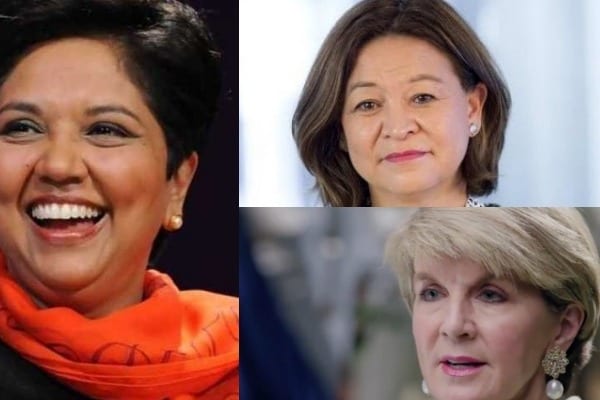We don’t know the ABC board’s exact reason for sacking Guthrie, although the statement suggested “fresh leadership” was required. while various news reports also claim everything to problems with having no editorial background, to a lack of daily visibility in the role, frequent travel back to Singapore and an inability to improve relations with the Coalition Government.
So we can’t say that gender had anything to do with it. But the fact she was the first woman to serve in the role — and that her apparent failures have been detailed all over the media today — certainly stings.
Not because her performance represents all women, or how any other woman would have performed in such a position. But rather because there are still too few women in the top roles of large organisations. The resignation or sacking of just one creates a significant gap in visible female leaders, and may inevitably lead to ridiculous questions regarding whether women are capable in such roles. It wasn’t so long ago that a number of high profile businessmen launched high profile attacks on the push for women on boards, following Catherine Brenner’s resignation as Chair of AMP.
In the Liberal National Party, two women have announced they will resign at the next election, a number of women have lost out in the pre-selections for (once) safe Liberal seats and former deputy leader Julie Bishop’s move to the backbench has created a gap in women at the very top. Those numbers are so dire that the Coalition could be left with more men called Andrew following the next election, than it has women in the House of Representatives.
In business, men called ‘Andrew’ already outnumber female CEOs leading ASX 200 organisations.
Meanwhile, the female pipeline for these top jobs is still not thick enough. 2017 research by Chief Executive Women found that 126 of the country’s largest listed companies still did not have any women in the line roles of their executive leadership teams, with men holding 79% of all executive leadership positions across the ASX 200.
A lack of visible female leaders doesn’t help in getting women into these roles, nor does seeing the leadership style, behaviour and in some cases personal circumstances of those who do make it into top jobs aired out in the national media — as was the case with Catherine Brenner, and has been to a lesser extent Michelle Guthrie (although we could see more in the coming days).
There are some bright spots. Shemara Wikramanayake will soon start as the next chief executive of Macquarie Group, in what’s been one of the most significant female appointments of the year. The Australian offices of large tech companies also offer some hope, given women are cracking the leadership ranks despite making up nowhere near a majority of technology graduates. Google Australia recently appointed its second female managing director, with Melanie Silva. Microsoft has had two female Australia bosses with Tracey Fellows and Pip Marlow, and Suzy Nicoletti currently heads up the local Twitter office.
In energy and resources, Elizabeth Gaines is leading Fortescue Metals Groups — in front of a majority female board — Catherine Tanner leads Energy Australia and Amanda Lacaze is CEO of Lynas Corp.
Christine Holgate is also particularly visible at the helm of Australia Post.
There are more, of course. But there’s just not enough. The fact remains, as Allyson Zimmermann states in the Financial Times, that: “Male CEOs change all the time, but when you lose women you feel it because there are so few. It would be great to get to the point when, if women step down, it doesn’t feel like a seismic shift.”
She was responding to Indra Nooyi recently stepping down as PepsiCo’s CEO in the US, with Nooyi replaced by a man. The lack of women in such top jobs in business is not isolated to Australia. The number of women leading S&P 500 companies has dropped from 30 in 2017 to just 24 in 2018. Just six women lead FTSE 100 companies in the UK.
Guthrie issued a statement yesterday saying she was “devastated” by the decision and will pursue legal options. She also noted that as the first woman in the job, she felt a “tremendous responsibility and unique privilege” to lead the ABC. It stings, once again, to think that a woman has to feel more responsibility in a leadership position, simply because she’s the first female to serve in such a role.
Progress for women in leadership is not necessarily (and some might now even say rarely) progress that is sustained over the long run.


